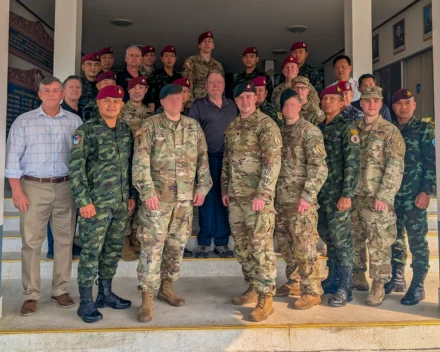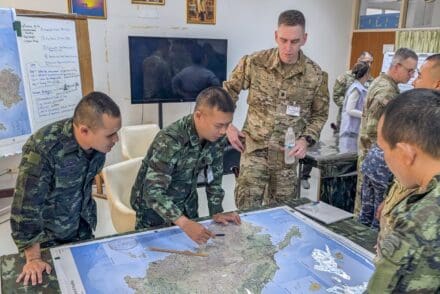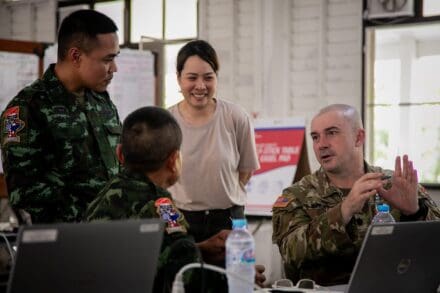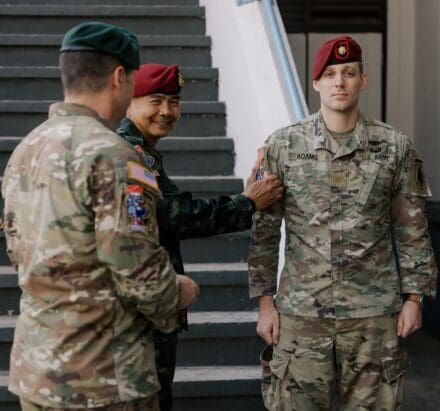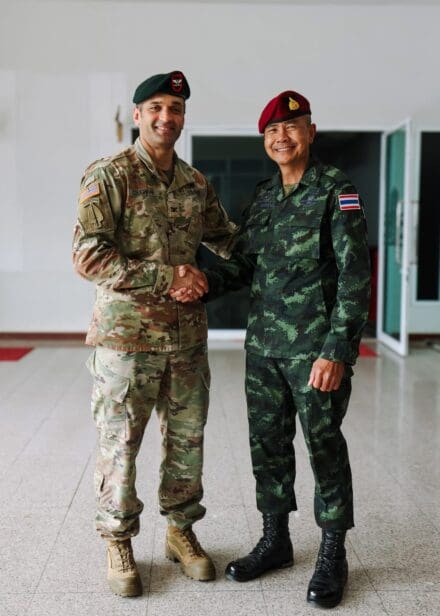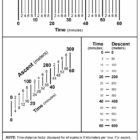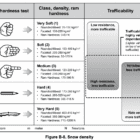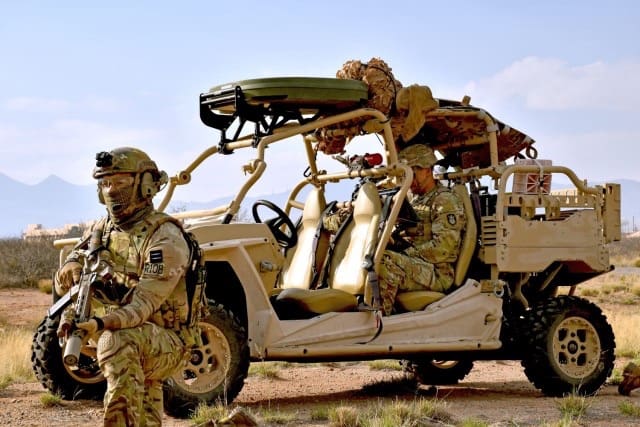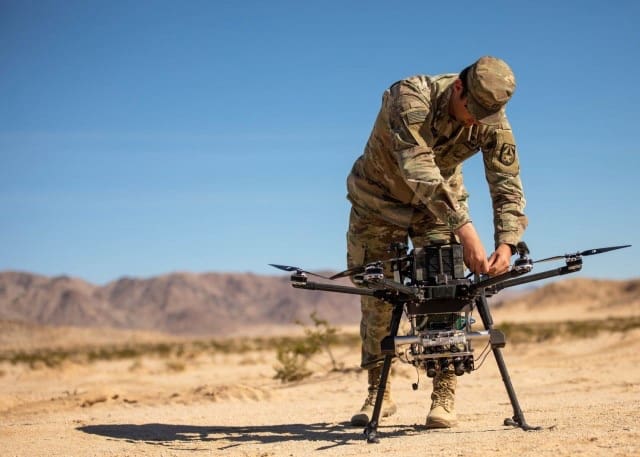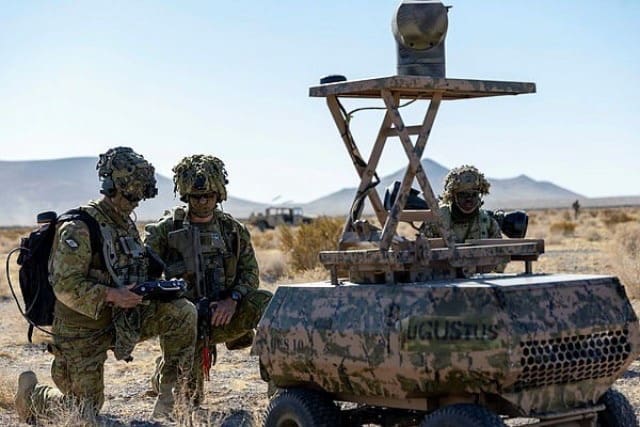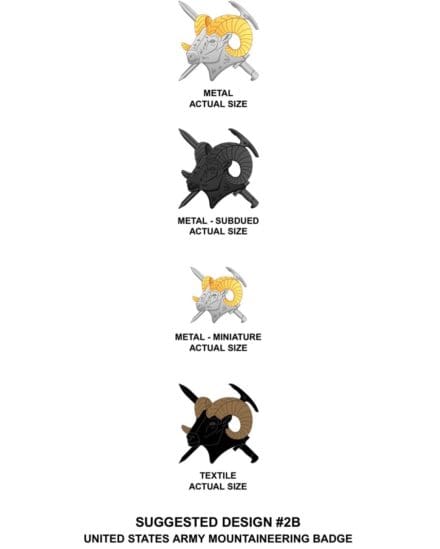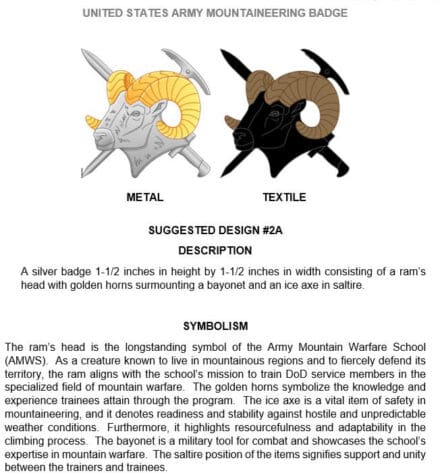The recent article regarding the Army’s intent to sole source additional M4 carbines from Colt inspired quite a bit of debate about replacing the gun, or at least modernizing it. As for replacing it, the Army already has a plan, and that is Next Generation Squad Weapons which is the example used in the article from the Army I’m sharing today to explain just a bit of the process to procure a new capability.

The image above shows the whole process to get new gear. It’s a multi-year path and is never as simple as going down to Dick’s and plopping down a credit card to buy some guns.
The system isn’t broken, it’s just slow. It exists for a reason, and that reason is that the military doesn’t want to spend potentially billions of dollars on something that doesn’t do what they need.
As for the M4 carbine, I think they’ve still got several decades of life in them and I suspect that eventually the Army will get around to improving them, after applying lessons learned from high pressure ammunition to 5.56mm. I don’t think we’ll see a new gun, but rather a new Upper Receiver Group to handle a new high pressure 5.56 round, sometime in the early 2030s.
Here’s the article, and just a little look into what the acquisition community does for our military.
Behind the scenes, critical process ensures weapons systems ready for Soldiers’ use
By Ed Lopez, Picatinny Arsenal Public Affairs October 1, 2024
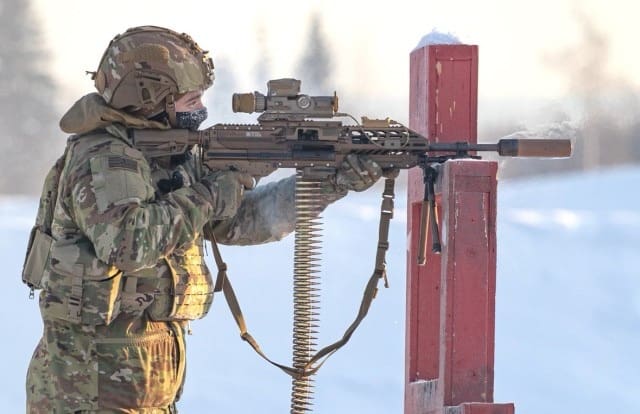
PICATINNY ARSENAL, N.J. — One of the most anticipated and well-received weapons fielded in recent years has been the Next Generation Squad Weapon (NGSW) System, which consists of the XM250 Automatic Rifle, the XM7 Rifle, and the XM157 Fire Control.
Three types of 6.8mm ammunition are also part of the system and will replace the currently fielded 5.56mm ammunition. The XM7 Rifle is the replacement for the M4/M4A1 carbine for Close Combat Force (CCF) Soldiers and Security Force Assistance Brigades (SFAB).
The XM250 Automatic Rifle is the replacement for the M249 Squad Automatic Weapon (SAW) in the automatic rifleman role for CCF Soldiers and SFABs. The XM157 Fire Control is a magnified direct view optic with a laser range finder, environmental sensors, ballistic solver and digital display overlay. It is compatible with the XM7 Rifle and XM250 Automatic Rifle.
While news media reports have documented the satisfaction and enthusiasm of Soldiers who have used the new weapons, far from the spotlight is a critical process without which such fieldlings could not happen: the Army’s Materiel Release process.
In military usage, materiel refers to arms, ammunition and equipment in general. Note that the term is spelled with a second “e” in the end, unlike the more common word “material.”
The Materiel Release process ensures that Army materiel is safe, suitable and supportable. That is where the simplicity ends. To achieve those goals requires a tightly woven process of testing, assessments, and approvals, along with coordination with internal organizations engaged in the Materiel Release process and with external organizations.
In the case of the Next Generation Squad Weapon System, the Materiel Release was performed at the U.S. Army Combat Capabilities Development Command (DEVCOM) Armaments Center. Although the Armaments Center is best known for its research and development activity (it developed the 6.8mm ammunition to obtain optimum performance), another important role is to shepherd through the process a Materiel Release when appropriate.
The Army’s required Materiel Release process performed at the Armaments Center is conducted on behalf of Program Executive Offices (PEO) that fall under the Assistant Secretary of the Army for Acquisition, Logistics and Technology, or ASA (ALT).
Although the Armaments Center supports all such offices, Joint PEO Armaments and Ammunition (A&A), PEO Soldier and PEO Ground Combat Systems are the most frequently supported.
In the case of the NGSW System, two PEO offices were involved: PEO Soldier for the two rifles and fire control system, and JPEO A&A for the three types of ammunition.
However, there is another key party involved before materiel can be fielded: the Materiel Release Authority. “At the end of the day, our Materiel Release mission at the Armaments Center is to provide a recommendation to the Materiel Release Authority, which is the Life Cycle Management Command (LCMC) that has the sustainment mission for the item,” explained Thor Gustafson, Materiel Release Coordinator at the Armaments Center.
“In the case of weapons sustained by TACOM, the Armaments Center makes a recommendation to the Commanding General of TACOM, saying it’s ready to go for the type of Materiel Release being pursued,” Gustafson said. “It has all the documentation required and we’ve done all our due diligence.”
If it’s an ammunition item, the Armaments Center makes a recommendation to the Commander of the Joint Munitions Command (JMC) that it’s suitable for the type of Materiel Release being pursued.
However, getting to that final stage, a sort of “hand-off” to the “Gaining Command,” is a complex process, with potential delays if it veers off course or stalls at some juncture. However, an underlying impetus to completing the process is a parallel awareness that the process is critical to getting needed systems into the hands of Soldiers.
The most common types of materiel releases conducted at the Armaments Center are Full Materiel Release, Conditional Materiel Release, Urgent Materiel Release (the category for the NGSW system) and Software Materiel Release. While each type of release may have its variations, there are generalized procedures that must be followed.
The Materiel Release Office plays a central role in guiding the process for those employees who are unfamiliar with the undertaking, which, when depicted by a visual process map, may seem like an intimidating labyrinth.
“There’s a lot of variables,” Gustafson said, “so that’s why I can never say how long it’s going to take from start to finish. There are so many interdependencies and there’s so many different types of issues that may come up, or specific nuances for a program that we have to kind of live through and mitigate and move forward with.”
A process map is one way to envision of the magnitude of the entire process, but a rough estimate of how long each step might take is just that. An estimate.
“I caution people that those are nominal durations for these steps, which might be helpful, but every program is different. Some programs can get through an Urgent Materiel Release in less than 180 days. And some of them can take significantly longer, maybe years. Our role is to get product to the field as fast as we can while still meeting all the regulatory requirements.”
Gustafson recommends using program management software to keep track of all the document requirements, when they are due, and who is responsible for meeting designated deadlines. “You input the dates for all these documents, and you look at the predecessors for each of them, and you can run what they call a critical path,” he explains.
“If I know a critical path, I know where I need to put my attention at what time, at what month, what day. For example, someone might have the hot seat this week because his documents are due. If his document or his assessment slips by a few days, we can now see what the trickle-down effect is for all the other documents that have a dependency on it, if there is any, and then how that might affect our end date to get the materiel release approved.”
A complicating factor to the materiel release is that not only does documentation have to be produced and routed within the Armaments Center, but also collected and exchanged with external organizations such as the Army Evaluation Center, the Army Test and Evaluation Command, and the Defense Centers for Public Health.
One of the crucial early stages of the materiel release process is the Integrated Project Team (IPT). Typically, the team is headed by a project officer from one of the Program Executive Offices who manages the overall program, project or release item. However, teams also require other essential members who contribute to meeting the overarching goals of ensuring safety, suitability and supportability.
Other team members may include a Safety Engineer, a Quality Engineer, an Explosive Ordnance Disposal (EOD) specialist and other representatives from external organizations. “It’s everybody who has a stake in the particular program that’s pursuing the materiel release,” Gustafson said.
Because there are various interdependencies for certain documents and approvals, frequent and ongoing conversations are essential, Gustafson said.
“An example would be if we have an item that’s going for an urgent materiel release and perhaps it’s not fully meeting a requirement that the user wanted. That means that suitability is impacted. If it’s not as suitable as intended, it’s possible there could be a safety impact. So that means our safety engineer has to be aware.
“And that safety implication may now require a technical manual update, which falls under supportability. A technical manual is used by Soldier to learn how to use an item. So, you can see how the three tenets of safety, suitability, and supportability can all be impacted by one particular issue because it has implications across the board. And that’s why the regular meetings with the IPT and frequent communications are really important to make sure that we get through this process as effectively and efficiently as we can.”
Other Armaments Center employees who play invaluable roles sit on review boards. They have functional expertise in specific areas, such as fuzing or software, and can vote to concur or not concur on whether standards are being met.
“We rely on them because we need an independent review of the item from somebody who’s not involved or engaged with the program that’s being reviewed,” Gustafson said. “They can make sure that we’re doing everything we need to do–the right things–and that we’re not missing anything.”
Working backwards from the anticipated release or fielding dates, anticipating all the steps, requirements and approvals, can help to get a handle on all the elements required to meet objectives, Gustafson said.
That approach was especially helpful in the case of the NGSW system, with two different rifles, a fire control system, and three different ammunition types.
“Basically, we did a lot of these meetings in November to get this thing approved to go out to the field by end of March, early April, which I think is tremendous to execute six different items that went through this Materiel Release process in a fairly quick amount of time.”
The number of materiel releases that are generated through the Materiel Release Office at the Armaments Center is difficult to predict or balance, said Gustafson.
“In some years, we only have a handful and other years, we have a plethora of all these programs. And we’ve got to maintain some sanity, right? So we balance our workload when we have many Materiel Release actions and prioritize the programs to best support the warfighter and their needs.
“I’ll say a lot of what we do is prioritization, giving the right attention at the right time to make sure these programs are successful.”
Making sure that the Materiel Release process is properly completed is an ongoing mission at the DEVCOM Armaments Center. A small sample of other recent Materiel Releases from the center include:
M821A4 81mm HE Mortar Cartridge, Full Materiel Release
M3A1 Multi-Role, Anti-Armor, Anti-Personnel Weapon System (MAAWS), Full Materiel Release
M153 CROWS V4.2, Full Software Materiel Release
Mk258 Mod 1 Armor Piercing Fin Stabilized Discarding Sabot with Trace 30 x 173mm Cartridge Follow-On, Urgent Materiel Release
XM1198 30mm HE Dual Purpose Self Destruct Cartridge Follow-On, Urgent Materiel Release
XM950 30mm Practice Cartridge Follow-On, Urgent Materiel Release
